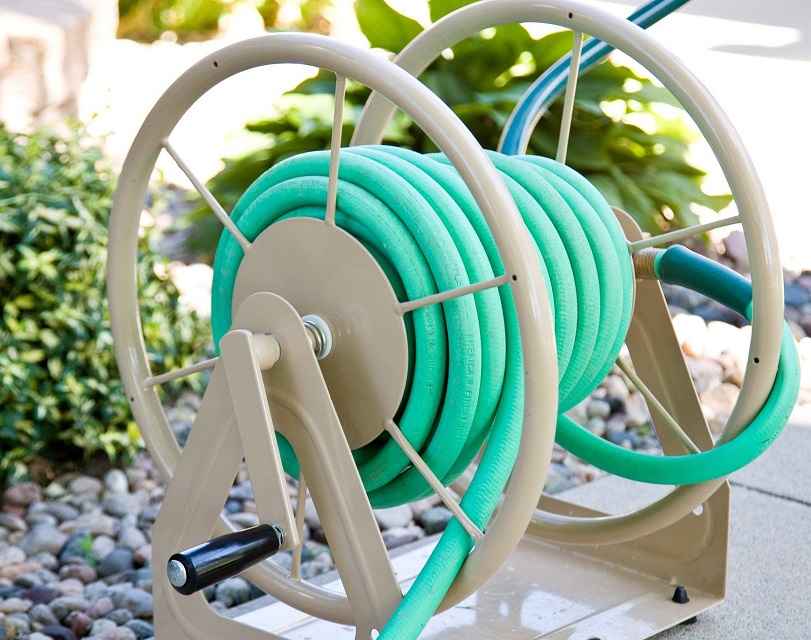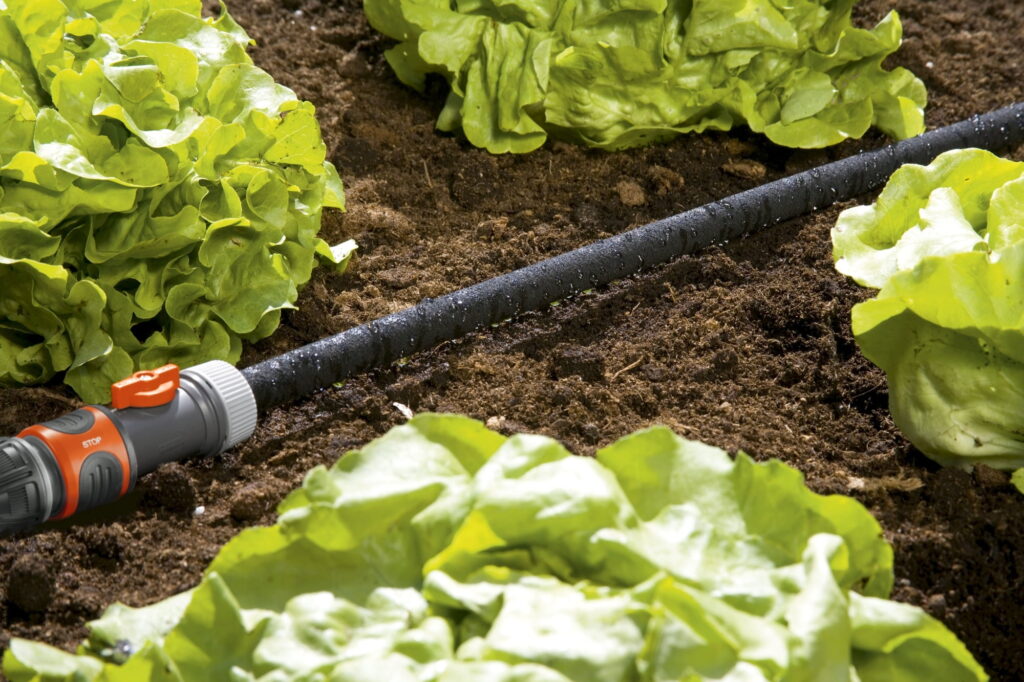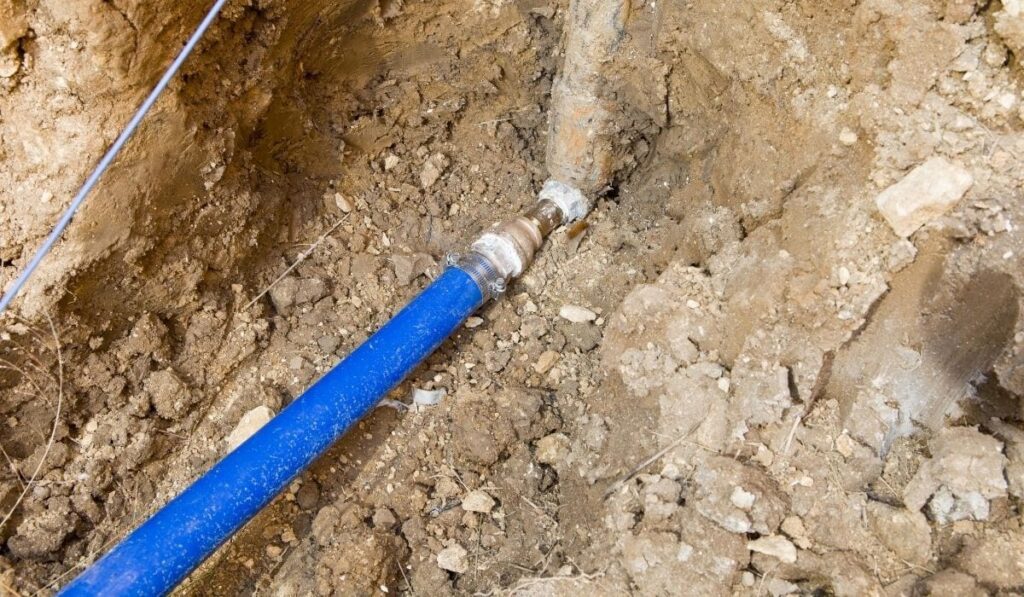
Looking for a well-maintained and elegant-looking garden, but without the higher cost of watering it? If yes! Keep reading.
Now, you can maintain a beautiful garden without worrying about the cost it takes for watering. Avoid using the old-fashioned sprinklers on your plants because almost every drop of water evaporates. A soaker hose is a solution to your gardening problems. It allows water to penetrate the ground.
Sprinklers are the traditional irrigation system, which wastes most of the water and increases the watering cost. On the other hand, a soaker hose reduces water consumption and saves a lot of money. It aids the environment and gives you complete guidance on how long you should run a soaker hose for watering your lawn.
A soaker hose undoubtedly is an outstanding choice for plant lovers. There are a few tricks to have the entire know-how of this irrigation system that we will discuss in this article.
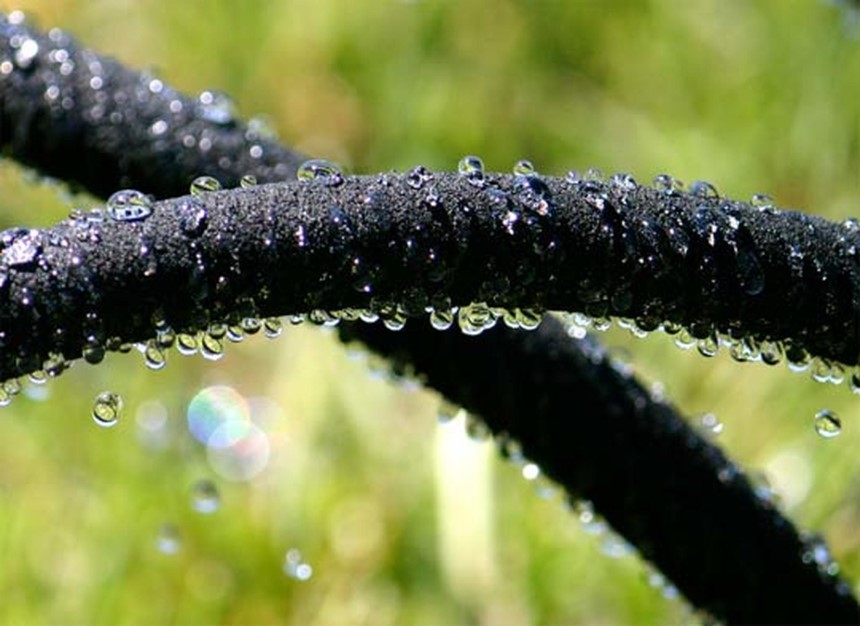
There is a slight difference between the drip irrigation system and the soaker hose. The drip irrigation system consists of plastic tubing that is waterproof. It contains tiny holes to pass water. In comparison, the soaker hose uses its surface and entire length to release water.
Soaker hoses are cost-effective, but it is not quite easy to install. It takes much time to precisely adjust the pressure. You need to use a pressure regulator. Otherwise, the whole system might not work.
To get the best outcomes for your lawn, all you need to do is follow the tricks listed below:
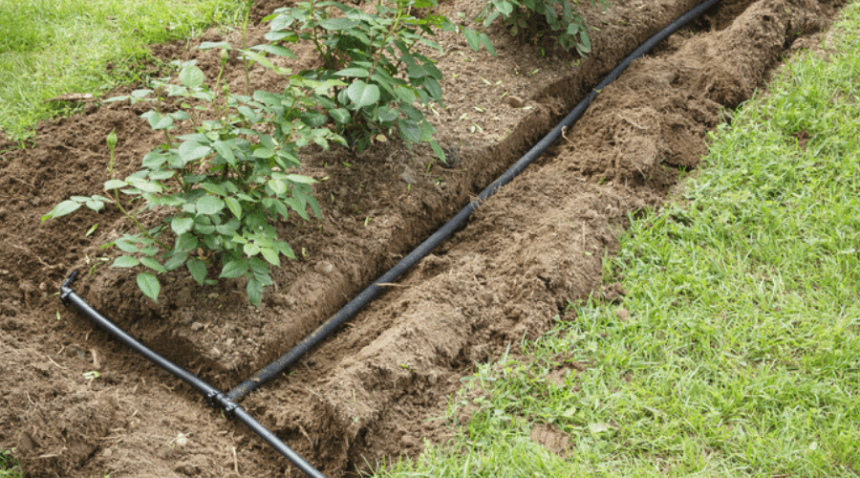
Follow these simple steps, and you can water your garden evenly in no time:
There is no specific design to place soaker hoses. Whenever you buy a soaker hose, you make a separate space for it around your garden.
It would be best if you placed the hoses in such a manner that they can run parallel to the crop and must be 1 to 2 feet apart from each set. Sometimes when you unwind the hoses, it gets kinky and affects its shape. Never let them in the garden in this manner. To unkink the hoses, place them out in the sun for few hours to get back their original shape. After it regains its natural shape, place them in the garden.
Garden pins can help secure the hoses and keep them to the place. People can stumble easily off the hoses get injured if not in a proper place. Garden pins are essential to prevent any harm in your garden. You need to be cautious to avoid such scenarios.
This final step is not essential but depends on personal choice. Some gardeners cover the soaker hose with mulch. It is another way of protecting the people from any hazard in your garden. By covering the hoses with mulch, it will not be an eyesore to your garden. It prevents stumbles and retains moisture from hoses.
One minor setback for using mulch is that it causes your hoses to clog. So, most people do not prefer using it and consider it an unnecessary burden. So, they do not mulch their hoses.
To ensure a uniform quantity of water to your ground, you should place the soaker hose to flat gardens. Steep sites are not a suitable place for a hose. It leads to uneven distribution of water to the garden. If you have hilly terrain, the drip irrigation system is an excellent choice for you.
Never bury the soaker hose under your lawn, the soil underneath is tightly packed, and it will restrict the flow of water out of the hose. Use mulch to cover the hoses. It will avoid evaporation and retain moisture around the roots of the plants. For beds and vegetable gardens, a soaker hose is the best system to use.
You must draw a map of the area you need to irrigate before installing a hose. Make a layout design of the soaker hose in parallel or curved lines to the beds that needs watering. Do not forget to attach the faucet to the hose.
For future landscaping, keep a record of the map you sketched in a secure area to prevent damage.
You must measure the distances the hose layout covers and the length of the hose you need for your garden. As per the experts, the maximum length limit for every soaker hose is 100 feet, which is around 30 m. It is easier for you to buy mend kits available on Amazon to get your work done.
For hilly terrain, the soaker hose is not usable due to low water pressure. Most gardeners use a nozzle to attach it with a soaker hose to adjust the water flow. You can open it slightly to water the lawn with a gentle trickle.
Soaker hoses contain porous material that allows the water to sweat out of the surface of the hose. Deposition of calcium or other minerals of high concentration can cause blockage in pores. Eventually, the hose will not work correctly. A nozzle will help and let the water seep out of the surface of the hose.
Your soaker hose needs very few items to get its installation. The equipment you might need to attach to your hose depends on the garden layout. Let us dive into them one by one.
1. Connectors
You need few connectors to attach the soaker hose to the faucet or make elbow joints for corners. You can purchase the connectors from any hardware store easily.
2. Timer
A timer is a must-have item for your soaker hose to ensure a sufficient and regular water supply. It helps to optimize the irrigation system.
3. Pegs
A heavy wire bent or tent pegs can help fix the hose to the ground. It will prevent people from slipping over it, which can cause potential damage to the hose. While anchoring the hose, make sure you do not pinch the hose.
4. Pressure Regulator or Faucet
When you attach the hose to a municipal water supply system, make sure to attach a pressure regulator to supply low and constant water pressure for your lawn if you are using a faucet or nozzle for your hose, no need to attach a pressure regulator.
5. Backflow Preventer
Sometimes, the municipal supply drops pressure, causing the water to flow in the wrong way. The water from your garden can flow back to the pipes if not contain any backflow preventer. In some places, it is mandatory to attach a backflow preventer for all permanent irrigations. It helps prevent any contamination of the drinking water by the chemicals from the garden.
6. Water Filter
To ensure that the water passing from the hose is clean, the water filter is a piece of the necessary equipment you need. It will prevent the blockage of the pores and water leaking as well.
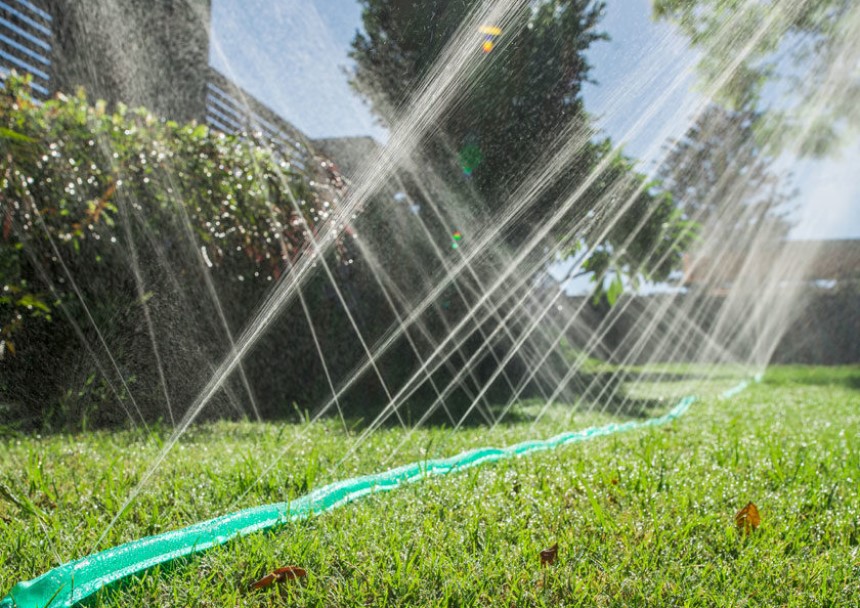
The water supply should be suitable for your lawn and plants. Use a timer to note the time intervals to run the water. The timer will help you to water the garden precisely.
Apart from a soaker hose, you can install an electronic system Trusted Source How to use water wisely in the garden and beat the drought | Gardening advice | The Guardian Create healthy soil, don’t water in full sun and use use grey water in the garden www.theguardian.com also to ensure water supply. It is an efficient method for the plants to get water on time.
The first and most important thing to consider before start gardening is the soil type. If you water your plants less frequently, sandy soil is not an option for you. It will not retain water longer and dries out soon.
The shrubs have a network of small roots and are more fragile than giant trees. It means they cannot store much water to survive and requires regular watering until they grow old.
Rhododendrons consist of a system with shallow roots, and like herbs, vegetables, and shrubs, they also need frequent watering.
Fruits need plenty of water to and nourish build flavors. In comparison, succulents are low-water plants, and they need a negligible quantity of water. However, the water requirements are low, but they need more care in the growing stage.
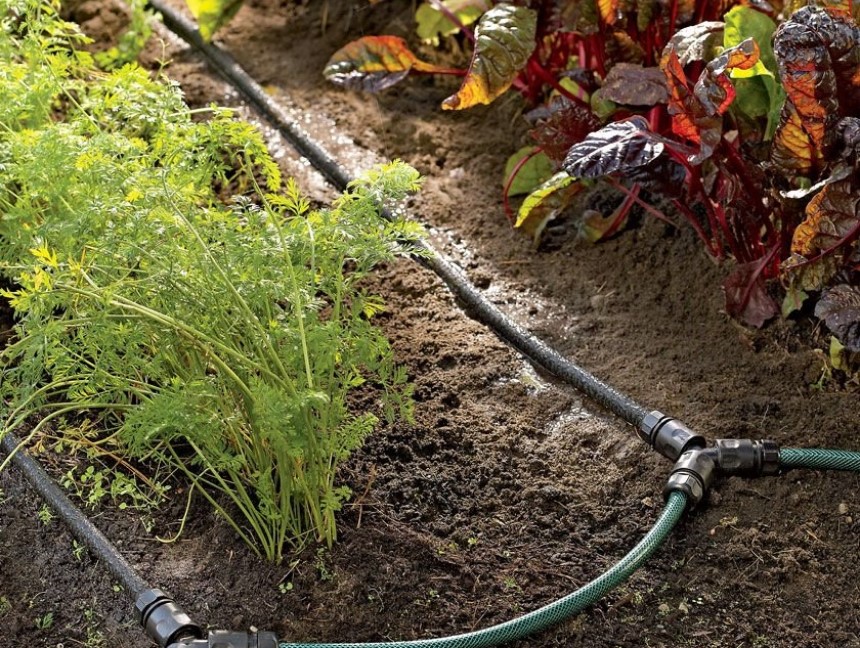 The Optimal Time for Soaker Hose
The Optimal Time for Soaker HoseAs per the experts, use a soaker hose on average for 30 minutes. It is the ideal time in almost every scenario. If this time is not working for you, you can increase or decrease it by 10 minutes, and it would be workable for you.
For water penetration measurement, it is essential to consider the type of soil you are going to water. In sandy soil, water soaks more quickly and penetrates deeply. Whether sandy soil has excellent water penetration, but it dries out very quickly and needs frequent watering. Cay, on the other hand, has poor water penetration, and it soaks water slowly. To check the soil:
The roots of trees and shrubs are 30 to 40 inches in the soil and few feet outside it, at the edge of the leaf canopy. Water the area for an hour in different positions of the trunk of the tree. And about 10 to 20 minutes for the shrubs. Or you can use a simple formula to calculate the time to use a soaker hose for watering trees and shrubs.
Divide 36 by the inches of water penetration in your test and multiply by 5. You will get the number of minutes to the water.
For vegetables and flowers, early morning is the best time to water. It allows the plants to get nourishment and bloom beautifully. You can also water the plants in the afternoon. But it needs considerable care because overwatering can make the plants susceptible to pathogens. The roots of most of the vegetables and flowers are in the top 18 inches of the soil. Divide 18 by the inches of water penetration in your test and multiply by five to get the time to water. As per experts’ sayings, rainwater penetrates deeply if the top 18 inches of the soil are moist.
Agricultural experts suggest watering the lawn in the morning. It is the best time as it allows enough time to evaporate excess water. Use a soaker hose to water trees, but Sprinklers works best for watering grass and lawns. Absorbing roots of the grass are in the top 1 foot of the soil, where it gets water and other nutrients efficiently. Use the sprinkler and set it in such a way so that the water would penetrate 12 inches. It works well in this scenario.
For optimizing your irrigation system and nourishing your plants, the soaker hoses are an excellent choice. It saves both your money and time and prevents water loss.
Soaker hoses are the first choice for every garden lover, and installing them into your garden to make it much easier to water the plants. You will learn how long to run a soaker hose for your plants, fruits, and even vegetables in this guide. All you need is a correct technique to install this system and start watering your garden efficiently.
The best and optimal time to run your soaker hose is around 30 minutes and can increase up to an hour, according to your plant’s needs. Your garden will stay healthy, and the plants look fresh with this irrigation system while you are enjoying it.
We recommend getting complete equipment that we have listed above to ensure you have all the necessary items to run your soaker hose correctly. Place your soaker hose in a clean and secure place to avoid any damage to your garden. Pin it up with garden pins to prevent people from stumble over it. Follow our guidelines and have a healthy garden!
